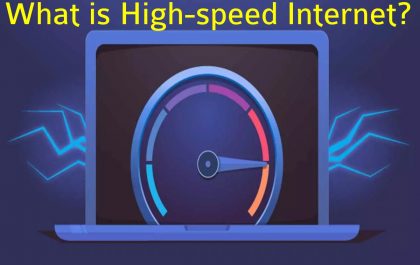Table of Contents
Mobile Application Development
Mobile application development is a combination of processes and procedures complex in writing software for small, wireless computing strategies such as smartphones and other handheld devices.
Similar to web application development, conventional software development is the foundation of mobile application development. However, a significant distinction is that mobile applications are frequently created expressly to capitalize on the distinctive user interfaces of various mobile devices. One may write an application for gaming on the iPhone, or a mobile health app on a wristwatch, utilizing the accelerometer and temperature sensor, respectively.

Types of Mobile Application Development
In the preceding years of mobile apps, developing the app locally was the unique way to ensure the app worked best on any device. This meant that the new code had to be written specifically for each device’s specific processor. Today, most mobile applications are device-free.
In the past, if an application needed to be cross-platform and run on more than one operating system (OS), there was very little, if any, code that could be reused from the initial development plan. Each device needs its mobile app development project with its code base.
Native applications
These apps are built using combined development environments (IDEs) and languages for mobile operating systems such as Apple iOS or Google Android. Local apps allow you to customise the features you need, but they can be more expensive than other technologies.
Hybrid applications
These are web apps that work like native apps. They are advanced using technologies such as HTML, JavaScript, and Pouring Style Sheets (CSS). Hybrid apps are more cost-effective to create than local apps and can be built faster, but they are not as full of features as local apps.
Encapsulated applications
A wrapped app runs inside the container app. Products such as the Microsoft Power App Drag and Drop Creation Tool allow less experienced developers to create mobile apps quickly. But lack of essential OS isolation, OS lock-in, and relatively newness can cause problems.
Business or productivity applications
These applications are essentially part of the market due to their great utility. They can help us book tickets, send emails, or keep track of our progress at work. Applications such as Trello, Slack or Todoist stand out.
Mobile trading apps
These types offer customers access to products and an easy and secure payment method for an optimal shopping experience. Among the most prominent, we find eBay or Amazon.
Entertainment apps
These applications allow users to share video content and images, chat, search for events or view content online. Here we can find applications such as Instagram, Netflix and YouTube.
Utility applications
Sometimes they go unnoticed, but we use them almost without realising it. The most popular apps of this type are barcode readers, trackers, and healthcare apps.
Game apps
This is one of the most popular categories in mobile technology. Companies invest increasingly in creating games and mobile versions because it is a very profitable market. Among the most successful games, we can highlight Candy Crush Saga or Angry Birds.
What is the process of Mobile Application Development?
The following steps should help you develop a framework for creating apps.
- Explain your strategy based on the replies to these questions:
- What is the purpose of your application? What problems will this solve?
- Are there apps that perform this function? If so, what good do they do? What are they missing?
- Will you hire developers or use an in-house team?
- What is your business type?
- How much are you eager to invest in evolving this application? Will you have investors?
- How long will it take to create this app?
- Choose your team. Do you need to hire a developer to build this app independently? A marketing person? If you are creating this app for your organisation, will you have stakeholders from multiple departments involved in the process (i.e. C-tier, Marketing, Sales, IT)?
- Mind and outline how your mobile app will address the issues you have identified and what features and functionality it will include. Prototyping can be as modest as using a whiteboard or paper to sketch ideas or tools such as InVision, Balsamiq, or Adobe Experience Design. Consider the user experience when developing your vision. This includes aspects such as design, usability, security, and performance.
- Create a roadmap for your product via the results from the earlier step. This will allow you to produce a step-by-step procedure to review your preferences and deliverables.
- Choose application development tools based on your needs.
- Start application development. The agile process is excellent for creating apps. Follow the DevOps mindset when creating your app. DevOps is an innovative delivery method that uses critical features such as:
- Apply automation whenever possible;
- Use Cloud Services
- Working with open source tools;
- Frequent communication with the team; Y
- Check the code regularly.
Conclusion
We have seen what mobile application development is. Now, we can know a little more about the digital context surrounding us and mobile application developers’ importance.
Also Read: SEO – Definition, Importance and More
Related posts
Featured Posts
What is High-speed Internet?
High-Speed Internet High-velocity Internet, also referred to as broadband Internet, is defined via the Federal Communications Commission (FCC) as Internet…
What is Bitcoins-Era?
Bitcoins-Era is a trading podium that uses a sophisticated artificial intelligence system capable of analyzing the market and autonomously buying…


